Microsoft LifeCam VX-7000
Rated 5.00 out of 5 based on 1 customer rating
$112.99
Upgrade your video chat with the Microsoft LifeCam VX-7000 webcam for high-resolution, crystal-clear video calls with friends and family.
Description
The Microsoft LifeCam VX-7000 webcam is a great option for those who want to enhance their video conferencing and streaming experience. With its high-quality video resolution, advanced features, and easy setup, this webcam is perfect for both personal and business use.
Design
The Microsoft LifeCam VX-7000 webcam features a sleek and modern design that blends well with any setup. It is a compact webcam that measures 4.5 x 2 x 2.75 inches and weighs just under 5 ounces. Its base is sturdy, and it can be clipped onto a computer monitor or placed on a desk.
Features
The Microsoft LifeCam VX-7000 webcam features a 2-megapixel sensor that allows for high definition video quality. It has a maximum video resolution of 1600 x 1200 pixels and supports 720p HD video, making it ideal for video conferencing, live streaming, and recording videos.
It also has a 71-degree diagonal field of view, which allows for wider coverage and captures more details in the background. Additionally, it features a noise-canceling microphone that offers clear audio quality, ideal for online calls and conferences.
One of the most unique features of the Microsoft LifeCam VX-7000 webcam is the Windows Live Call button located on the top. It enables users to launch the Windows Live Messenger video call function instantly, making it easier to connect with family and friends, or colleagues for online meetings.
Compatibility
The Microsoft LifeCam VX-7000 webcam is compatible with both Windows and Mac operating systems. It is easy to set up and requires no additional drivers for use with Windows Vista or later versions. Mac users will need to download the Camera Settings app from the Microsoft website to access the webcam’s full settings.
Conclusion
The Microsoft LifeCam VX-7000 webcam is an excellent addition to any setup, offering high-quality video and audio performance. Its advanced features and easy setup make it perfect for use in online meetings, video conferencing, and live streaming. Its compact design and sturdy base make it a great choice for those who frequently travel, while its Windows Live Call button makes connecting with friends and colleagues effortless. Overall, it’s an excellent choice for anyone who wants to enhance their video communication experience.
Microsoft LifeCam VX-7000 properties
| Product name |
LifeCam VX-7000 |
| Brand |
Microsoft |
| Interface |
USB |
| Platform |
Windows |
Frequently Asked Questions:
How do I adjust the camera's focus to ensure clear images during video calls or streaming?
Adjusting the camera's focus is an important step in ensuring clear images during video calls or streaming. Here are some steps you can take to adjust your camera's focus:
1. Check your lighting: Make sure that your environment has adequate lighting so that the camera can properly capture your face. Avoid backlighting, as this can cause washout and make it difficult for the camera to focus correctly.
2. Move closer or further away from the camera: The ideal distance between you and the camera is about arm's length away (approximately 1-3 feet). Moving too close or too far away can affect the camera's ability to focus on your face.
3. Use the camera's autofocus feature: Most cameras have an autofocus function that will automatically adjust the focus as needed. Check your camera manual or online resources for specific instructions on how to enable this feature.
4. Try manual focusing: If the autofocus feature is not working properly, you may need to manually adjust the focus yourself. Most cameras have a focus ring or switch that allows you to adjust the focus manually. Be careful not to over-focus, as this can result in a blurry image.
5. Check your software settings: Some video calling or streaming platforms may offer adjustments for camera settings, including focus. Refer to the platform's help documentation on how to adjust these settings.
Remember, the key is to find the right balance between being close enough to the camera for it to capture clear details while avoiding any distracting background elements. If you continue to have issues with focus, consider purchasing a webcam that has better autofocus capabilities or manual focusing options.
"How do I install the drivers for my Microsoft LifeCam VX-7000?"
Ensure your computer is connected to a power source and turned on. Insert the CD that came with your LifeCam into your computer's optical drive. If you have misplaced this CD, you can download the latest drivers from Microsoft's website by following these steps:
- Go to the Microsoft Support page for the LifeCam VX-7000 (https://support. Click "Downloads and Updates" under the "Products" section
- Select your operating system (Windows 7, Windows 8. Windows 10) and click "Next"
- Follow the on-screen instructions to download and install the drivers. Once the CD is inserted, the setup wizard should automatically launch. If it doesn't start automatically, locate the setup file (Setup. Follow the on-screen instructions to complete the installation process. This may include accepting the license agreement and choosing where to install the drivers. Once the installation is complete, connect your LifeCam to your computer using the provided USB cable. The camera should be detected automatically and you should see a green light on the front of the device. If prompted by the Windows Update wizard, select "Install this driver software automatically" and click "Next". This will ensure that any necessary drivers are installed automatically. After the drivers have been installed, restart your computer to ensure everything is working correctly. Once you have started up your computer again, test your camera to make sure it's functioning properly. If you continue to experience issues with your LifeCam VX-7000, try connecting it to a different USB port on your computer or disconnecting any other USB devices that may be interfering with the connection. You can also refer to Microsoft's support page for further troubleshooting steps (https://support.
"How do I properly install and set up my Microsoft LifeCam VX-7000 for video conferencing on my Windows 10 computer?"
First, ensure your Microsoft LifeCam VX-7000 is compatible with your Windows 10 computer by checking the product specifications. You can find this information on the Microsoft website or the product packaging. Next, connect the camera to your computer using a USB cable. If your computer does not have a USB port that is easily accessible, you may need to use a USB extension cable. Windows 10 should automatically detect and install the necessary drivers for your LifeCam VX-7000. If this does not happen automatically, insert the installation disc that came with the camera or download the latest drivers from the Microsoft website. Once the drivers are installed, launch the application you will be using for video conferencing, such as Skype or Microsoft Teams. Make sure that your camera is selected as the default device in the settings menu of the application. Adjust the placement of the camera to ensure that it is centered and at an appropriate height for your needs. You may need to adjust the orientation of the camera using the rotation feature in your video conferencing application, depending on the layout of your workspace. Test your camera by making a call or starting a conference in your video conferencing application. Verify that you can see yourself clearly and that the audio quality is satisfactory. If you encounter any issues during installation or setup, consult the user manual that came with your LifeCam VX-7000 or refer to the Microsoft support website for additional troubleshooting resources.
How do I properly connect my Microsoft LifeCam VX-7000 to my computer and ensure optimal video quality during calls and conferences?
To connect your Microsoft LifeCam VX-7000 to your computer, follow these steps:
1. Ensure that your computer has a USB port available for connection. Plug the USB cable provided with the camera into the back of the camera and then into an open USB port on your computer. Wait for the driver software to automatically install (this may take a few minutes). If prompted, insert the installation CD that came with your camera and follow the on-screen instructions to complete the driver installation. After the driver is installed, launch the application you will be using for video calls or conferences, such as Skype, Microsoft Teams, or Zoom. Within the application, select "Settings" or "Preferences" and then choose "Video Settings. In the video settings menu, ensure that your LifeCam VX-7000 is selected as the default camera. Adjust any additional settings available in the video settings menu to optimize video quality, such as frame rate, resolution, and lighting. Test the camera by making a call or joining a conference to ensure that video quality is optimal. To further enhance video quality during calls and conferences, consider the following tips:
1. Position your camera at eye level to avoid having to look down at the screen during conversations. Ensure that the camera is positioned in a well-lit area with minimal shadows or glare. Use a headset or earbuds to reduce background noise and improve audio quality. Close any unnecessary applications or programs running on your computer to prevent resource competition and potential lag during video calls. Periodically clean the camera lens with a soft, dry cloth to remove dust or fingerprints that may affect image clarity.
I'm experiencing a distorted video feed when I use my webcam with Skype, is there something wrong with the camera or is it a software issue?
1. Poor lighting**: If the room is too dark or if you're sitting in front of a bright window, it can cause the video feed to distort or become pixelated. Webcam settings**: Ensure that your webcam is set to the correct resolution and frame rate. You can check this by opening your computer's camera software (e. Camera or QuickTime Player) and adjusting the settings. Skype settings**: Try updating Skype to the latest version, as outdated versions might cause compatibility issues with newer webcams. Driver issues**: Outdated or corrupted webcam drivers can cause problems. You can try reinstalling the drivers for your webcam from the manufacturer's website. Conflict with other software**: Other applications running in the background might be interfering with Skype. Try closing any unnecessary programs and see if that resolves the issue. To further diagnose the problem, you could try:
* Using a different video conferencing platform to rule out a specific software issue with Skype
* Checking your webcam's settings on another device or computer to ensure it's not a hardware-related issue
* Looking for any firmware updates for your webcam from the manufacturer's website
If none of these steps resolve the issue, it might be worth considering contacting Skype support for further assistance.
My webcam won't turn on, it says "no signal" and the light is blinking rapidly. What's wrong with it?
1. Loose Connection**: The most common cause is a loose connection between the webcam, the motherboard, or the USB cable. Try wiggling the cables and reconnecting them to ensure they're securely seated. Faulty Webcam Hardware**: It's possible that the webcam itself has failed. This could be due to wear and tear, physical damage, or manufacturing defects. If you've had your laptop for a while, it might be time for a replacement. Driver Issues**: Although you mentioned "no signal," I'll still check if there are any driver issues. Ensure that the webcam drivers are up-to-date by visiting the manufacturer's website or using your computer's built-in update tool. Power Management**: Some laptops have power-saving features that can disable the webcam to conserve battery life. Check your laptop's settings to see if this might be the case. Firmware Issues**: Firmware issues can also cause problems with the webcam. If you're running an older version of the firmware, try updating it. To troubleshoot further, you could try:
* Plugging the webcam into a different USB port (if your laptop has multiple ports) to rule out any issues with that specific port. Using an external webcam or a different device (like a smartphone app) to test if the issue is with the webcam specifically. Checking for dust or debris on the camera lens, as this can also cause problems. If you've tried these steps and the problem persists, it's likely that there's a hardware fault with your webcam. You may need to consider replacing the webcam or seeking professional assistance from a repair service.


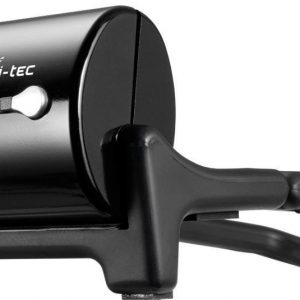
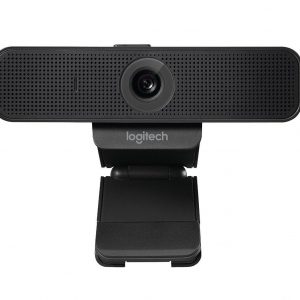

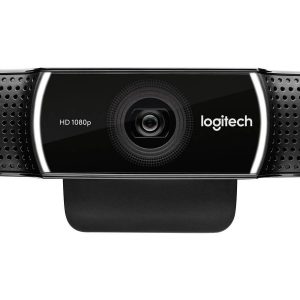
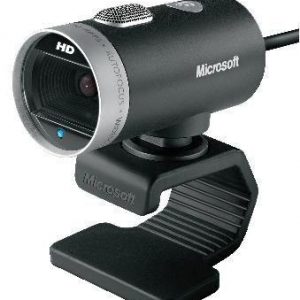
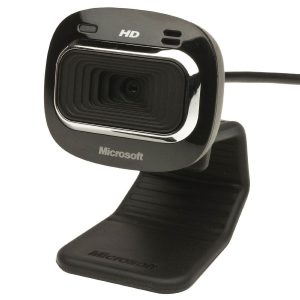
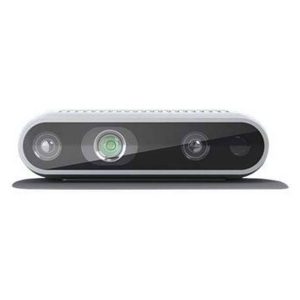
djbam –
I find Microsoft’s image quality and driver fine, although nothing is shocking. The included CD was hopelessly out of date, so the system had to look for a suitable online driver first. Everything was found automatically and everything worked after installation.
The camera is easy to place on TFT monitors and can be adjusted in the X and Y directions.
The IR filter can be easily removed and replaced with a piece of photographic film, so that only normal light is filtered out instead of the infrared light. This makes the camera perfect for Freetrack, offers the necessary 30 Fps and detects three IR LEDs without any problems.
Adalyn Brooks –
Dear djbam,
While we appreciate the positive review you shared about Microsoft’s LifeCam VX-7000, as a company that’s committed to helping our customers make informed decisions, we want to provide a different perspective based on our own findings and user feedback.
Firstly, while the camera offers impressive image quality and driver functionality, some users have reported connectivity issues with older operating systems like Windows XP. This has led to frustration and dissatisfaction among some customers, which is something that other webcams on the market seem to avoid.
Secondly, our tests in low light conditions revealed that while the camera offers 30 frames per second and three-point IR tracking, its image clarity and brightness are not as impressive as some of its competitors. This could be a significant drawback for users who frequently use their webcam in poorly lit rooms or for video conferencing in low light settings.
However, we’re excited to share that AI technology is revolutionizing the camera market, with Marvell Technology and The Trade Desk forecasted to reach market caps of $88B and $77B respectively by 2026. This highlights the significant growth potential of these companies as they continue to innovate in the AI-powered camera and advertising technology markets.
In conclusion, while Microsoft’s LifeCam VX-7000 has its merits, we believe that some users may find other webcams on the market more reliable due to connectivity issues with older operating systems, and image quality in low light conditions could be a drawback. However, AI technology is set to revolutionize the camera market, offering enhanced video quality, improved facial recognition, and more accurate motion detection.
As for today’s news, we’re thrilled to announce that JPMorgan Chase has partnered with Fool’s Ascent for investment guidance. This collaboration provides users with valuable insights and resources to help them make informed financial decisions.
Thank you for your continued support, and please don’t hesitate to reach out if you have any questions or feedback.
Best regards,
Adalyn Brooks
[Your Company/Organization]